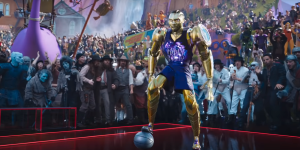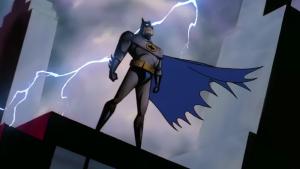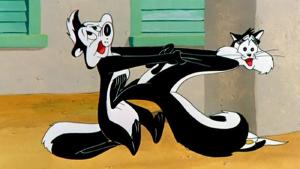Journal
The Droogs of Space Jam
6 April 2021
 WarnerMedia
WarnerMediaIf you’re a 90s kid, you almost certainly remember the movie Space Jam. The over-the-top mix of Looney Toons characters and Michael Jordan’s basketball prowess makes for a wild cinematic ride and has become a cult classic. So it was only a matter of time before Hollywood would make a sequel. Thus, coming this summer is Space Jam: A New Legacy.
 WarnerMedia
WarnerMediaMuch has changed since the 1990s, including the hyper-consolidation of media properties. In 1996 when Space Jam was released, Warner Bros. Animation was at its height producing television series such as Animaniacs and the animated Batman series. It was the successor to Warner Bros. Cartoons, which most famously created Looney Tunes. In many ways Space Jam was a way to revive Looney Toons, giving a more modern take on a forty-year-old franchise.
Today Warner Bros. Animation is just one small part of a giant media conglomerate that includes everything from the Hachette Book Group to CNN and HBO. It rivals Disney in its copyright control of media and popular culture. This wealth is on full display in the new movie, with cameos from everything from the flying monkeys of The Wizard of Oz to the Iron Giant and Scooby-Doo.
It’s perfectly understandable for a kid’s movie to feature other kid-friendly franchises. Sure, the The Wizard of Oz is 80 years old, but it is iconic. It’s a bit strange that the movie also features R-rated characters such as the white walkers from Game of Thrones, and war boys from Mad Max, but those are modern franchises. Toss something to the adults who are paying for the family evening.
But who in their right mind thought to include the droogs?
 WarnerMedia
WarnerMediaFor those who aren’t familiar, the droogs are a gang of young men featured in Stanley Kubrik’s 1971 movie A Clockwork Orange. It is a dark movie so graphically violent and sexually explicit it was originally given an X rating. The movie is based on the 1962 novel by Anthony Burgess, where the main character and his droogs engage in acts of ultraviolence such as murder, rape, and pedophilia.
Clockwork Orange isn’t a modern work, and the droogs aren’t going to give adult viewers feelings of warm-fuzzy nostalgia, so why include them? One possibility is that they are so controversial and so iconic that the resulting social media firestorm will overshadow the removal of Pepé Le Pew from the movie. Sure, Pepé is a lecherous French stereotype who refuses to acknowledge consent, and that no means no, but darn it, he’s just so likable…
 WarnerMedia
WarnerMediaBut the real answer is simply that Warner Bros. included them because they could. Anthony Burgess sold the movie rights to his novel for $500 back in 1962. Warner produced the 1971 movie, and given the terms of copyright Warner Bros. can use the droogs in whatever movies they want until at least 2066. They could create an edgy teen cartoon based on them and air it on Cartoon Network. Or they can just put them in the background of a cinematic fusion of cartoons and the NBA.
It’s a perfect example of the twisted nature of modern copyright. Early copyright granted 14 years of exclusive rights. It could be extended for another 14 years, but after that, it would enter the public domain. By that standard, movies such as Jurassic Park would enter the public domain this year. The original Star Wars trilogy would have been public domain for a decade, and the first Harry Potter novel would leave copyright during the Biden administration. Today personal works are copyright for 70 years after an author’s death, while movies and other corporate media are copyright for 95 years. So when Warner Bros. releases the new Dune movie, it holds the copyright until 2116.
Copyright was intended as a way to allow creatives to control and profit from their work, but it has become a way for mega-corporations to control the media we consume. Just six companies control most of the film and television media produced in the U.S. Just five publishing companies control most of the books we read. Most of what we read online comes from a handful of companies such as Google and Facebook. That stranglehold is made possible by allowing copyrights to last for a century or more. It’s the same copyright stranglehold that lets you make a Jam with Looney Tunes and Droogs.